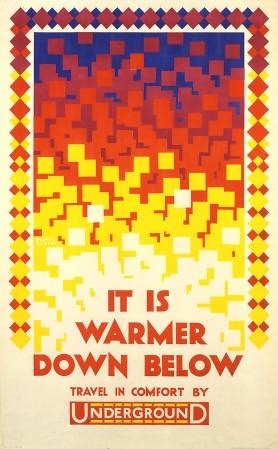Department store Heal’s have started this year’s festive season with a call for customers to ‘be inspired’ by their ‘retro revival of gifts from Christmas past’, writes John Ridpath. But for some graphic inspiration, it’s well worth taking a look at some classic Christmas posters by the department store, currently being exhibited at London’s Geffrye Museum. These prints accompany the museum’s Christmas Past exhibition, which recreates seasonal traditions in English homes over the last 400 years.
Top: Christmas Circus, Heal’s (1936)
Below: After the circus? The Geffrye Museum’s reconstruction of a 1930s family home at Christmas. Photograph: Steve Speller
Heal’s has been trading on Tottenham Court Road since 1840. Its current building at number 196 is an architectural classic, designed by Cecil Brewer and completed in 1917. The posters on display at the exhibition advertise intriguing Christmas promotions including ‘The Heal’s Ark’ and ‘Christmas Circus’, all taking place at the Tottenham Court Road store during the 20s and 30s.
Above: Christmas Gifts, Heal’s (1920s)
Below: For Pence or For Pounds, Heal’s (1934)
The designs pictured here were all printed by the Dangerfield Printing Company Ltd, a lithographic plant that opened in St Albans in 1896. Specialists in large colour posters and transfers for trains, buses and trams, hundreds of examples of the firm’s work can be found amongst London Transport Museum’s online collection. Much of this work embodies the spirit of modernism that developed in British poster design throughout the twentieth century (see ‘Stop, look, listen’, for more on modern British posters).
Back in 2010, ’tis the season for icy weather and tube strikes; one poster printed by Dangerfield for London transport, ‘It’s Warmer Down Below’ (below), may strike a chilly chord with commuters of the Christmas present.





No comments:
Post a Comment